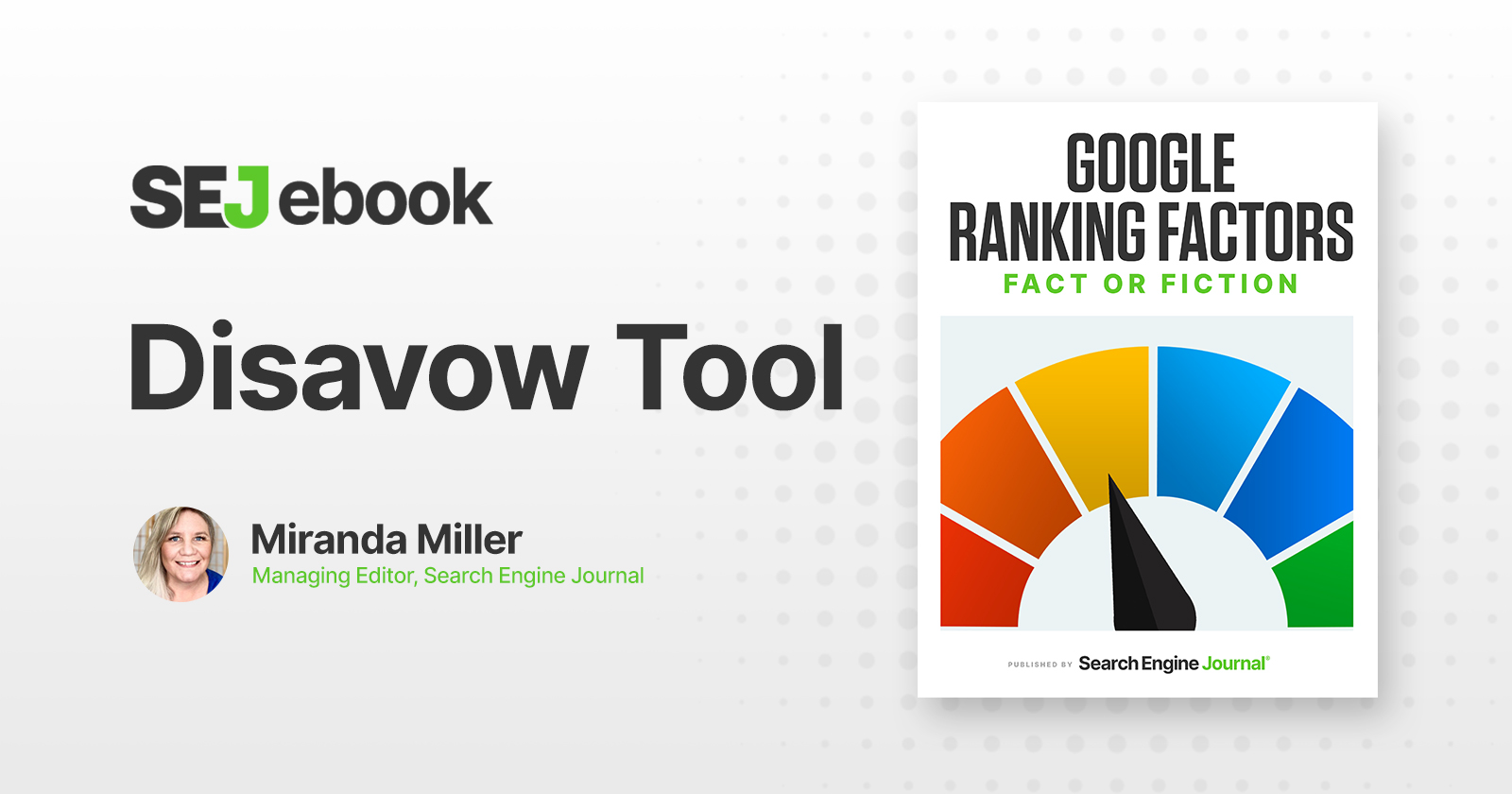The disavow tool, now located in your Google Search Console, enables you to tell Google not to count spammy links as part of your link profile.
Following Google’s Penguin update in 2012, toxic links became a huge issue. Sites with link profiles that appeared unnatural ended up hurting a lot of businesses and brands that had dabbled in spammy link building tactics in prior years.
SEO professionals balked at the idea of having to contact someone on the other end of every potentially damaging link to ask for its removal. There were also many reports of extortion (“Sure, we’ll remove that sketchy link, just send us lots of $$$!”)
And although Google initially resisted, the disavow tool was born.
We know unnatural links can negatively affect your search rankings.
So can you improve your search rankings by using Google’s disavow tool?
Let’s answer this question.
The Claim: Disavow Tool as a Ranking Factor
Claims about this range from “use it to protect your rankings” to “we used the disavow tool and rankings skyrocketed.”
The idea is that if you rid your link profile of spam, identifiably paid, and other low-quality links, your organic search rankings will directly benefit.
The Evidence for the Disavow Tool as a Ranking Factor
Reddit and SEO forums are rife with anecdotes about the power of disavowing links.
Here are just a few titles currently coming up on the topic:
- How to Use Google’s Disavow Tool For Better Rankings
- How to Effectively Disavow Links & Protect Organic Ranking
- Disavow Unnatural Links and Improve Your Rankings
Really, that’s about it.
There’s no verifiable evidence that would prove that using the disavow tool tells the algorithm anything about your site.
The Evidence Against the Disavow Tool as a Ranking Factor
Google is careful in its positioning of the disavow tool as a preventative measure against manual action – not a component of the organic ranking algorithm – and says:
“If you have a manual action against your site for unnatural links to your site, or if you think you’re about to get such a manual action (because of paid links or other link schemes that violate our quality guidelines), you should try to remove the links from the other site to your site.
If you can’t remove those links yourself, or get them removed, then you should disavow the URLs of the questionable pages or domains that link to your website.”
But as Penguin taught the SEO world, manual actions aren’t the only weapon in Google’s link spam arsenal.
Links are a ranking factor, and the disavow tool can help you clean up that signal.
Still, it’s not a ranking factor on its own and is only useful in cases where the link spam is so egregious Google can’t possibly ignore it on its own.
The Disavow Tool as a Ranking Factor: Our Verdict

Is using the disavow tool a ranking factor?
No. You will not experience any lift in search rankings for using the tool.
Absolutely.
Can you positively influence organic rankings by cleaning up the links pointing to your site?
Yes. It’s a matter of reducing any potential negative impact of low quality/spam links; you are influencing an existing ranking factor.
But only in certain cases, and those tend to be few and far between.
If you’ve experienced a manual penalty, cleaning that up is going to stop the suppression of your site in Google search.
Even outside of a manual action, spammy and identifiably paid or otherwise manipulated links could be negatively impacting the algorithm’s assessment of your link profile.
You can actually end up doing more harm than good by disavowing links.
As Google’s John Mueller says,
“Random links collected over the years aren’t necessarily harmful, we’ve seen them for a long time too and can ignore all of those weird pieces of web-graffiti from long ago.
Disavow links that were really paid for (or otherwise actively unnaturally placed), don’t fret the cruft.”
If you do use it and don’t see any results, it could be that you didn’t need to use it in the first place – or, you need to follow up with a reconsideration request.
“The most common misconception is the disavow tool doesn’t work. It does. For a manual penalty, the disavow file works, when used as a last resort. That means that a full fledged and well documented link removal campaign must precede it.
The disavow file, combined with a detailed reconsideration request, is a core component in successfully getting a manual penalty revoked.”
Bottom line: Google does not use your use of the disavow tool as a search ranking signal.
Featured image: Paulo Bobita





![[SEO, PPC & Attribution] Unlocking The Power Of Offline Marketing In A Digital World](https://www.searchenginejournal.com/wp-content/uploads/2025/03/sidebar1x-534.png)